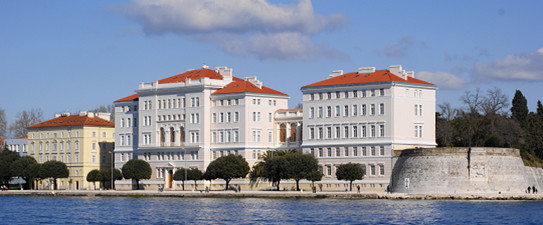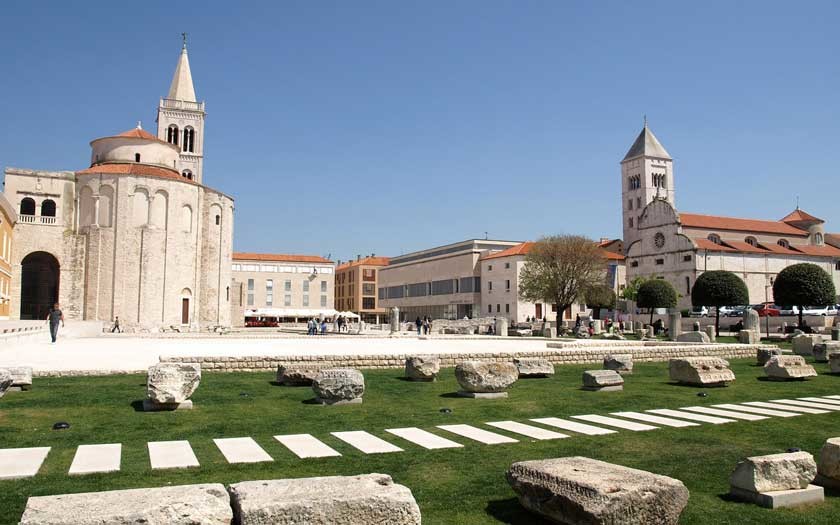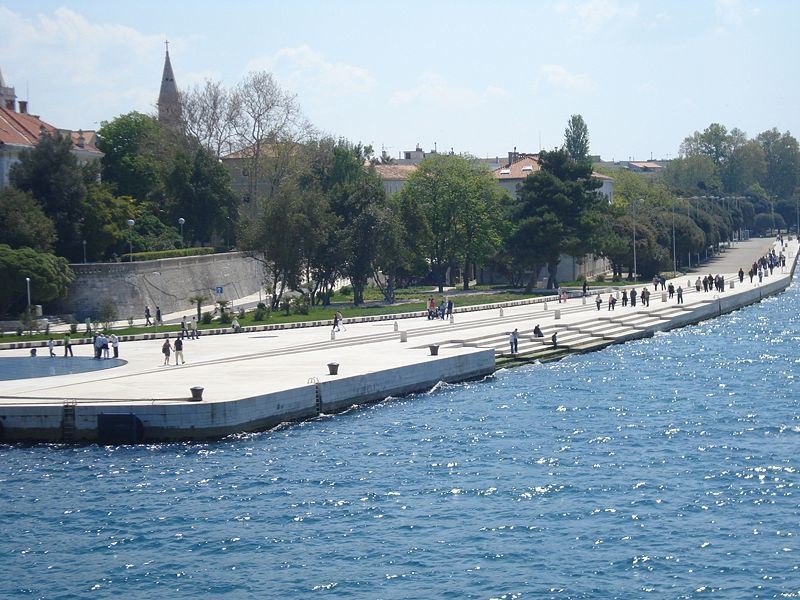Hello everyone... Today I will give some pieces of information about this city. It is one of the best city for me in Croatia.
For centuries the capital city of Dalmatia and today the centre of the region. A city with a rich heritage of world importance, visible at every step. The Roman Forum from the 1st century, St. Donatus’ Church from the 9th century is the most famous medieval basilica and trademark of the city. The reconstructed Romanesque St. Grisigono’s Church from the 12th century and the St. Mary’s bell tower from the year 1105; the St. Anastasia’s Cathedral from the 13th century; the People’s Square with the City’s Lodge and Guardhouse from the 16th century, as well as the mighty fortification walls with first-class Sea-farer’s and land gates from the 16th century followed by the Three and Five Wells Squares and many palaces, villas and other historic monuments.
The City of Zadar is not only known for its historical and cultural monuments but also its amply supplied vegetable and fish markets on the peninsula (a part of the old city). The market is daily supplied with fresh fruit and vegetables from the rich hinterland of "Ravni Kotari", the fruitful waters of Lake Vrana and the islands of Ugljan and Pasman. Its attractiveness is due greatly to its fantastic natural position in the very middle of the Adriatic coast, and to the four National Parks surrounding it: Plitvica Lakes, Paklenica mountain, the unique River Krka waterfalls and a string of wondrous islands called the Kornati. No less attractive are the nature Parks of Telascica, the canyon of the Zrmanja River and the largest natural lake in Croatia – Lake Vrana in the vicinity of Biograd.

The coast is particularly indented, the islands and the untouched nature allures many boaters to these regions. The archipelago counts 24 bigger and about 300 smaller islets and rocks, 3 nature parks – Telašćica, Velebit and Vransko jezero and 5 National parks – Paklenica, Plitvice lakes, Kornati Islands, Krka and Sjeverni Velebit classifying Zadar and its surroundings at the very top of the Croatian tourist offer.
Built on Roman urban principles, where there are several major longitudinal streets traversed by a greater number of latitudinal streets, give the city a rectangular shape. The old town is a treasure trove of archaeological treasures and monuments to the ancient, medieval and Renaissance periods. This is visible by several sacral and architectural monuments, why Zadar is rich with heritage: the church of SV. Donat [St. Donatus], the Roman Forum near the main square, Kalelarga – the longest and widest street, the Cathedral of SV. Stošije [St. Anastasia], an Archaeological Museum with its exceptional treasures and many other monuments of cultural and historical heritage (town gate, Arsenal, churches, museums…).

Another symbol of the city is the church of St. Donatus from the 9th century built on the remains of the ancient Roman Forum. Initially dedicated to the Holy Trinity, in the 15th century started bearing name after the Zadar bishop Donatus. The church has not been used for any sacral function in a long time. It has extraordinary acoustic characteristics. “The Musical Evening of St. Donatus”, concerts of Renaissance and Medieval music, have been taking place in it for over 50 years.
In a city with the most beautiful sunset, in a maritime archipelago facing a multitude of islands and islets, which protect the city from the strong winds, enjoy the symphony of the Sea Organ and magical urban light installation Pozdrav suncu [Greeting the Sun] near the new harbour for cruise ships. The Greeting to the Sun consists of three hundred multi-layered glass plates placed on the same level as the stone-paved waterfront in the shape of a 22-meter diameter circle. Under the glass conduction plates, there are photo-voltage solar modules through which symbolic communication with nature is made, to communicate with light, just like the Sea Organs do with sound.
The archipelago of islands spreading along the northern Dalmatian coast is a phenomenon of more than 100 islands and islets existing on a relatively small area. National Park Kornati – an archipelago of 89 uninhabited islands. The sea waters are a paradise for all nautical activities. Enjoy the Mediterranean cuisine, taste the sweet Maraschino cherry liqueur, and take a swim from one of the sandy beaches in the Zadar area!
The Sea organ (Croatian: Morske orgulje) is an architectural sound art object located in Zadar, Croatia and an experimental musical instrument, which plays music by way of sea waves and tubes located underneath a set of large marble steps.
Chaotic reconstruction work was undertaken in an attempt to repair the devastation Zadar suffered in the Second World War. The frantic reconstruction turned much of the seafront into an unbroken, monotonous concrete wall.
The device was made by the architect Nikola Bašić as part of the project to redesign the new city coast (Nova Riva), and the site was opened to the public on 15 April 2005. The waves interact with the organ to create somewhat random but harmonic sounds.

The Sea Organ has drawn tourists and locals alike. Also, white marble steps leading down to the water were built later. Concealed under these steps, which both protect and invite, is a system of polyethene tubes and a resonating cavity that turns the site into a large musical instrument, played by the chance-based results of the wind and the sea waves.
In 2006, the Sea Organ was awarded the prize ex-aequo of the fourth edition of the European Prize for Urban Public Space.
